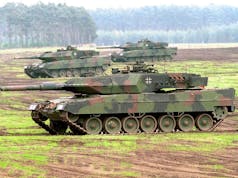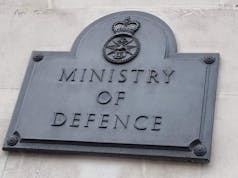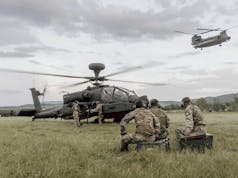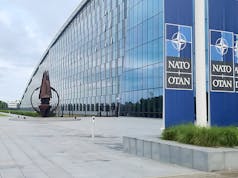Saab and US defence company Raytheon say they have successfully completed a series of guided flight tests for a shoulder launched Guided Carl-Gustaf Munition featuring a semi-active laser guidance system.
The firm say that the tests were performed at the Mile High Range in Sierra Blanca, Texas, United States and at Saab Bofors Test Centre in Karlskoga, Sweden.
“The test firings in Sweden that were performed during September 25-26, 2019 was in the presence of an international audience. Three munitions were fired in total; two against static targets and one against a moving target. A semi-active laser was used to guide the munitions to target impact. Other seeker technologies (e.g. imaging IR) were also demonstrated as optional solutions for the final product. The demonstration in Sweden further included dynamic warhead tests against various targets.
Saab’s Carl-Gustaf weapon system is used by the U.S. Armed Forces as well as the ground forces of more than 40 other countries. The guided munition will allow Armed Forces to accurately engage stationary or moving targets up to, and beyond 2,000 meters. The increased range, in combination with a Confined Space capability will offer troops greater tactical flexibility when selecting a firing position.”
Görgen Johansson, Head of Saab business area Dynamics, said in a release:
“The Guided Carl-Gustaf Munition is a next step in the evolution of the Carl-Gustaf system. It will be the most advanced Carl-Gustaf munition yet and will offer greater precision, minimise collateral damage and deliver outstanding performance with pin-point accuracy and multi-target capability.”













So what is it for? Anti armour, light armour/bunkers, swarm fast boats. Man portable, so for the army, with/without naval or AFV mounting? Which existing system is it replacing?
Do defence firms design something off their own back, or do governments say to them “we have this already, can you make a better one?”
For example the MILAN missile from the 1970s weighs 7kg, is fired from a post weighing 25kg, and delivers a 3kg warhead out to 3km. A better one would deliver the same effect warhead out to the same range but weigh just 5kg with a lazer guide instead of a wire, and a soft launch system in a lightweight shoulder mounting tube.
No chance of a mounting on ships or AFV’s. For AFV’s what would be the point? If you’re going to mount a weapon it will be on an RWS. To make that worthwhile it would need to be a full ATGM. For naval use the huge backblast of CG makes it a bad idea. Again if you’re going to mount it on an RWS you want something with more range and soft launch, like a full ATGM. Otherwise the autocannon will do everything that CG can do and more.
CG is perfect as a man carried system, a guided round is just another string to its bow, it increases the amount of guided munitions that can be carried very easily. But it won’t replace full on ATGM’s like Javelin. As a cheaper multi-purpose system it has a lot to recommend it.
I seem to remember that you were only allowed to use the weapon twice in one day during training. This was due to the immense pressure wave the back blast generated. As much as the weapon is useful, cheaper than NLAW for example, there’s little point having it, if it damages the person using it!
It seems that you missed that it’s a confined space round, which you can see in the video also.
It depends on how the round is pushed out. Being a recoiless rifle design they work like a reverse muzzle brake, where the back blast is spread to the sides and dispersed over a greater area. The blast wave that is generated hits the firer and can damage the soft organs of the body i.e. liver, kidneys etc. If the round uses something like a soft launch system where its pushed out using compressed air before the round’s charge is ignited, this may remove the problem, but would need top rate guidance to hit the target post ignition.
Have you actually looked at the video it’s rather obvious that the ignition is done in flight and obvious the target is hit even when it’s moving.
The round is a confined space round and the munition is guided by semi-active laser designators so no problems. Somebody will lase the target, the guy will pop up, fire, and get back down. The missile simply homes in on the laser and destroys the target.
Here you have a link https://www.armytimes.com/news/your-army/2018/10/09/the-carl-gustaf-is-getting-a-game-changing-laser-guided-munition/